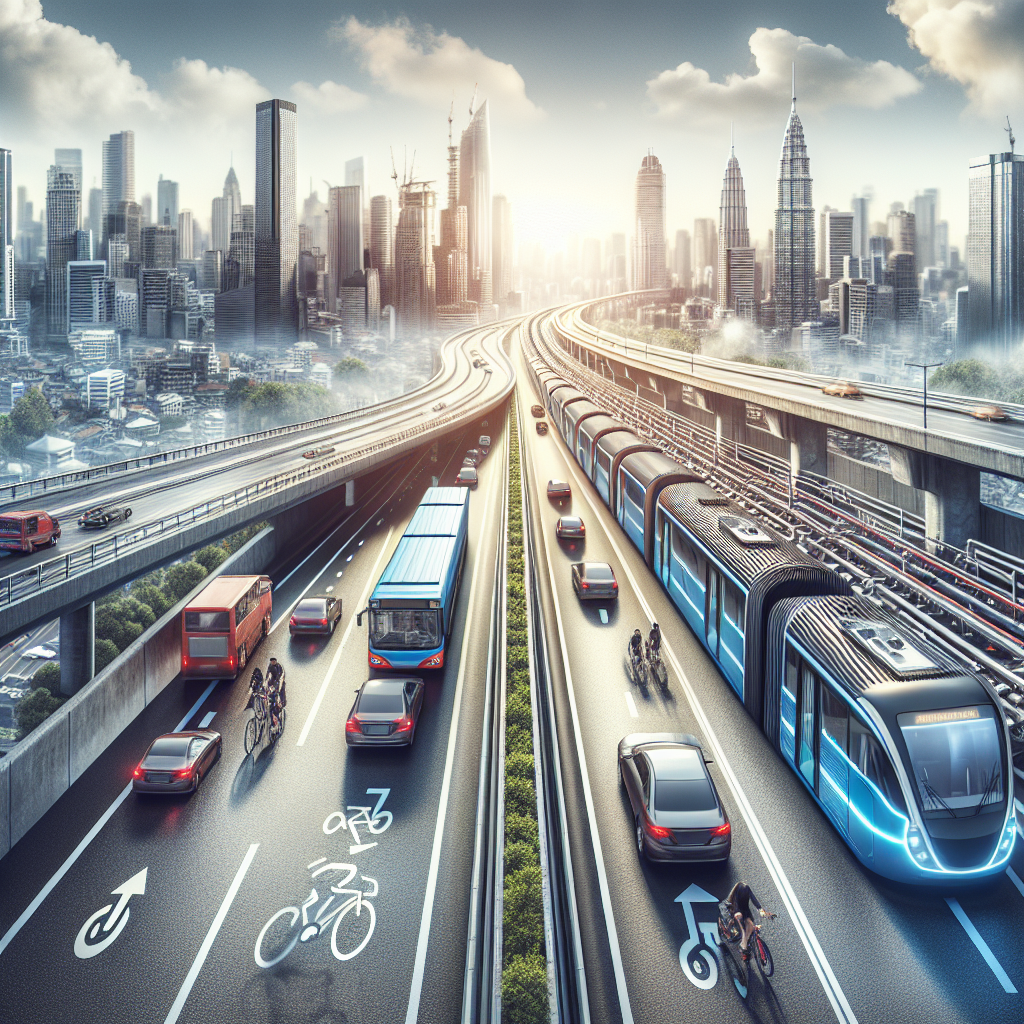Public transportation plays a pivotal role in shaping modern urban environments, serving as the backbone of sustainable city development. As urban areas continue to grow, the challenges related to traffic congestion, environmental degradation, and the efficient movement of large populations become increasingly complex. One of the most effective solutions to these challenges is the enhancement and promotion of public transportation systems. This article explores the role of public transportation in reducing car dependency, highlighting its benefits, challenges, and the path forward.
Understanding Car Dependency
Car dependency refers to the heavy reliance on personal vehicles for transportation. This phenomenon is prevalent in cities where urban planning has historically prioritized road infrastructure for cars over public transit options. The consequences of car dependency are multifaceted, including increased traffic congestion, higher greenhouse gas emissions, and diminished urban livability.
The Role of Public Transportation
Public transportation systems, including buses, trains, subways, and trams, offer a viable alternative to personal vehicles. These systems are designed to move large numbers of people efficiently, reducing the need for individual car use. The role of public transportation in mitigating car dependency encompasses several key areas:
1. Environmental Impact
Public transportation significantly reduces the per capita emission of pollutants and greenhouse gases. By consolidating trips that would otherwise be made by individual cars, public transit systems lower the overall carbon footprint of urban travel.
2. Traffic Congestion
High-capacity public transportation can alleviate urban congestion. By providing a reliable and efficient alternative to car travel, public transport can reduce the number of vehicles on the road, thus easing traffic flow and decreasing travel times for all.
3. Urban Development
Public transport fosters more sustainable urban growth patterns. Cities that invest in public transportation encourage the development of compact, walkable communities around transit hubs, reducing the need for long commutes and supporting a shift away from car-centric urban planning.
4. Economic Benefits
Investments in public transportation yield significant economic returns. They create jobs, both directly within the transit system and indirectly through improved accessibility to commercial areas. Moreover, by reducing congestion and the environmental impact of transportation, public transit systems contribute to a healthier and more productive workforce.
5. Social Equity
Public transportation provides essential mobility for all societal segments, including those unable to drive due to age, health, or economic reasons. By offering affordable and accessible transportation options, public transit plays a crucial role in enhancing social equity and inclusion.
Challenges in Reducing Car Dependency
Despite these benefits, several challenges hinder the reduction of car dependency through public transportation:
– Funding and Investment: Adequate funding is essential for developing, maintaining, and expanding public transportation infrastructure. Yet, securing consistent investment remains a challenge in many regions.
– Public Perception and Habits: Changing long-standing habits and perceptions about car ownership and use is a significant hurdle. Many individuals view cars as symbols of freedom and status, making the shift to public transportation a cultural challenge.
– Integration and Accessibility: For public transportation to be a viable alternative to personal vehicles, it must be conveniently accessible and well-integrated with other modes of transport, such as biking and walking paths.
The Path Forward
To effectively reduce car dependency, cities must adopt comprehensive strategies that address these challenges. This includes:
– Increased Investment: Allocating more resources to the expansion and improvement of public transportation networks.
– Policy and Planning: Implementing policies that favor public transport over car travel, such as congestion pricing, reduced parking availability, and dedicated lanes for buses and bikes.
– Public Awareness Campaigns: Educating the public about the benefits of public transportation and encouraging a cultural shift towards sustainable travel habits.
– Innovation and Technology: Leveraging technology to enhance the convenience, reliability, and efficiency of public transportation.
FAQs
Q: Can public transportation really replace cars?
A: While public transportation may not replace cars entirely, it can significantly reduce dependency on personal vehicles, especially in densely populated urban areas.
Q: Is public transportation more environmentally friendly than electric cars?
A: Yes, on a per passenger basis, public transportation typically produces fewer emissions than even electric cars, considering the energy sources and manufacturing processes involved.
Q: How does public transportation promote social equity?
A: By providing affordable and accessible transportation options, public transportation enables all community members, regardless of income level, to access essential services and employment opportunities.
Q: Can investments in public transportation create economic growth?
A: Yes, investments in public transportation not only create jobs within the transit system but also stimulate economic growth by improving access to commercial areas and reducing costs related to traffic congestion and environmental cleanup.
Q: What can individuals do to support the shift to public transportation?
A: Individuals can support the shift by utilizing public transportation for their daily commutes, advocating for improvements and expansions of local transit services, and participating in community discussions about sustainable urban development.
In conclusion, public transportation stands as a critical tool in the fight against car dependency, offering a pathway towards more sustainable, livable, and equitable cities. While challenges remain, the collective efforts of governments, communities, and individuals can drive the transformative change needed to reduce reliance on personal vehicles and promote a greener, more connected urban future.

